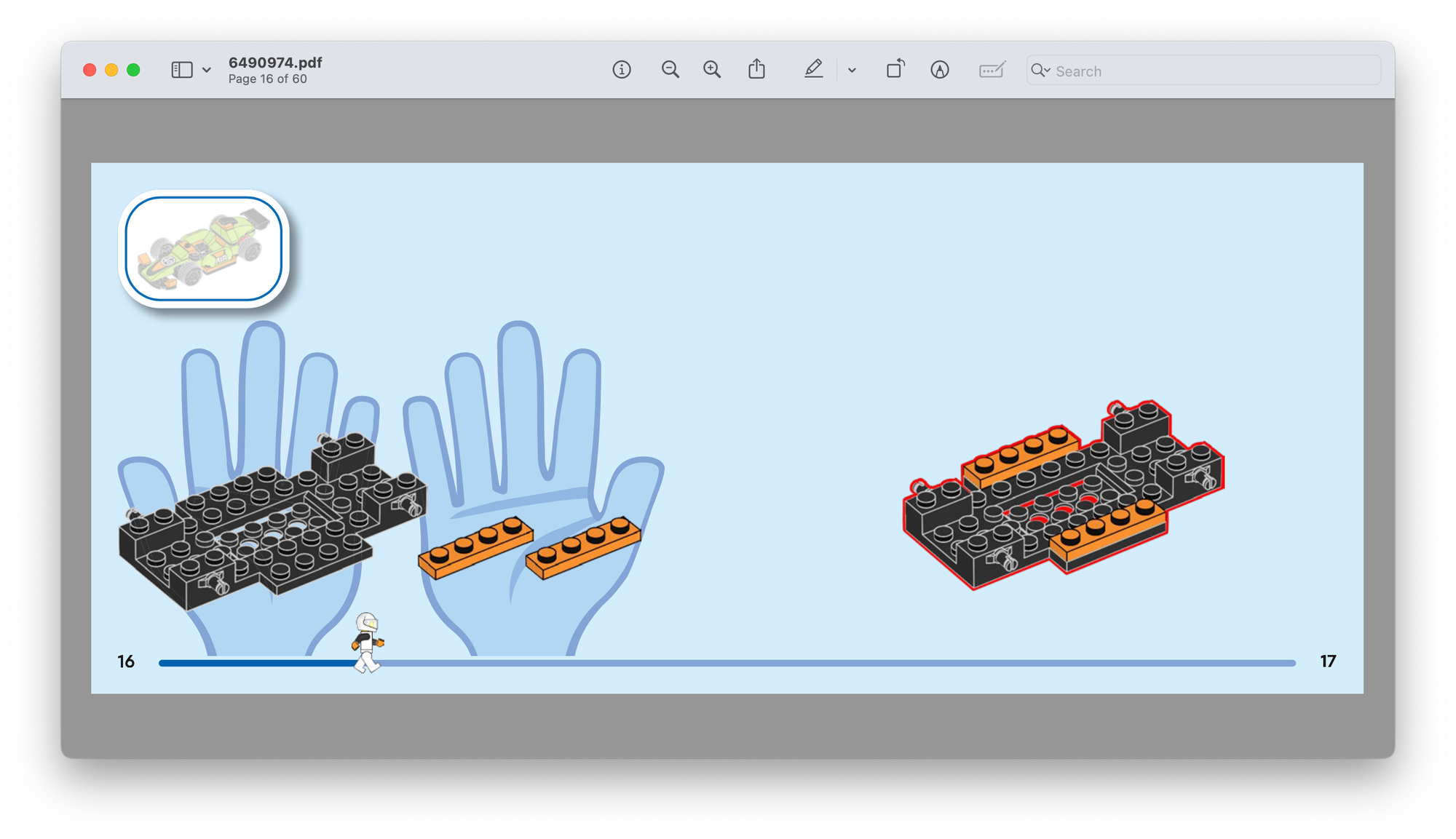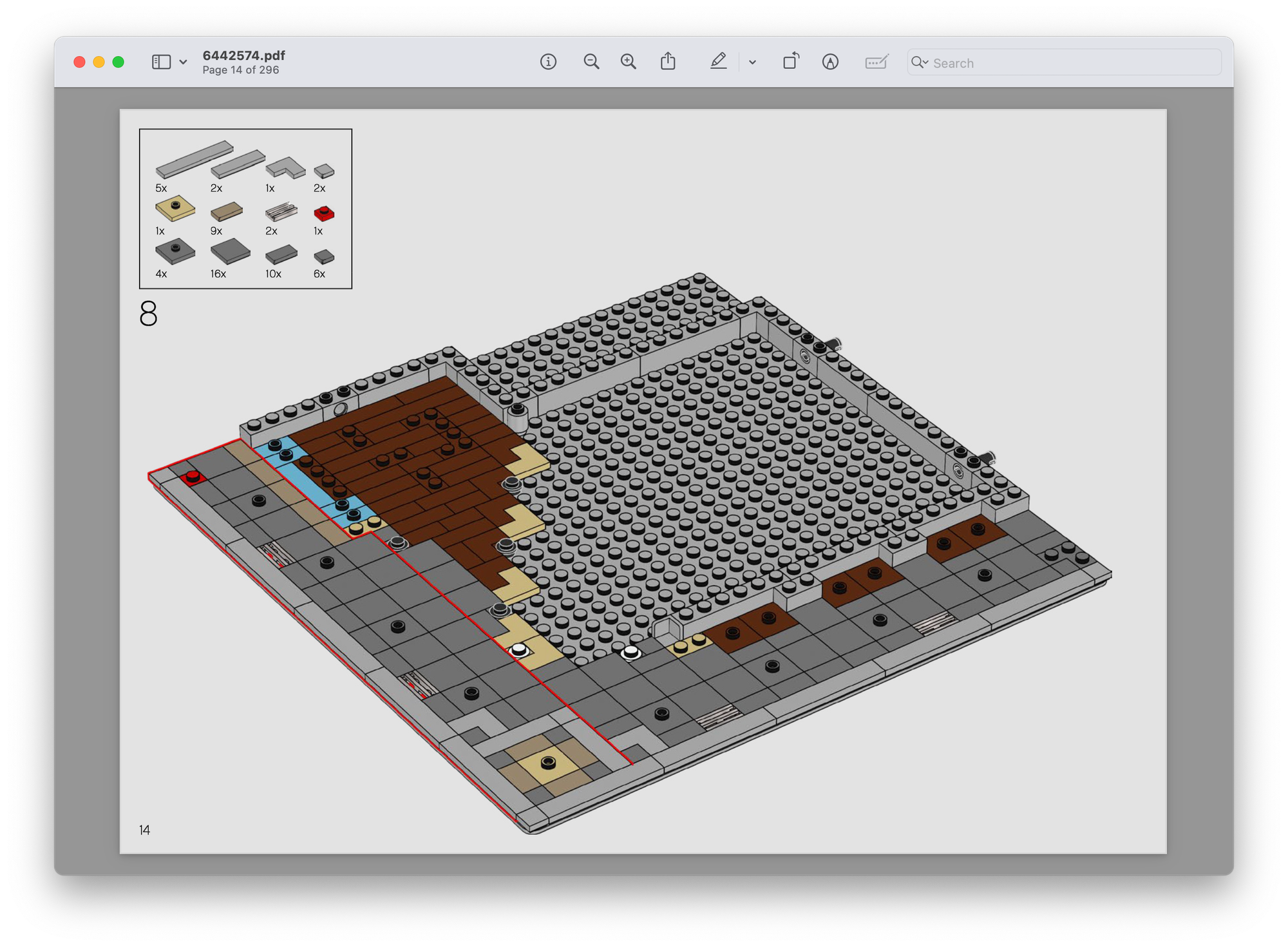Lego: A study in meeting your stakeholders where they are

Lego makes a huge array of different sets, but they all boil down to putting the specified plastic brick in the specified orientation and position, and then moving on to the next brick. It would stand to reason, then, since Lego sets are all procedurally similar, that Lego sets would have a standard approach to instructions, right? But they don’t!
Lego Instructions
Lego does an amazing job tailoring their communications to the experience level (using age as a proxy) of the target users of their products. These sets are for ages four and up, nine and up, and eighteen and up:



Lego for beginners

The instructions for “four and up” have friendly kid-looking hands holding the pieces you’ll need in the next step on the left page, and where the pieces go on the right. It’s highly visual and super easy for a small human to understand - first they need to retrieve the pieces in the hand, then they put them in place. I had the great pleasure of watching my four year-old daughter, Cayce, start to build Lego sets on her own using these 4+ instructions. After a few sets, she was able to do 5+, 6+, and even 7+ sets because the foundational 4+ had guided her and developed her skills.
Lego for experts

In contrast, I’ve been doing Lego for 30-something years and I don’t need the amount of guidance that my little kiddo does. I don’t want to spend page after page putting down two or three pieces. The expert sets (18+) are tailored to suit that level. Step 8 of the Boutique Hotel set, for example, uses 59 pieces. In one step. That’s more pieces than in the whole of Cayce’s 4+ race car.
It bears mentioning that this hasn’t always been the case for Lego. Comparing instructions from older sets to the newer, it’s very clear that they have iterated and invested in improving their instructions. The recent addition of the young child 4+ style has bridged the gap so that someone with no Lego experience can find a set that suits their experience and ability, just like a highly experienced Expert builder can, and everyone leaves feeling satisfied.
What Can We Learn From This?
There are a lot of situations where assumptions about knowledge, experience, and context, can make for sub-optimal experiences. When I worked as a technical writer, I was most effective when identifying content gaps that we couldn’t expect a reader to be able to fill in. Working as an internal tools engineer, the assumptions we made about our users (who we worked directly with, and whose jobs some of us had previously done) were frequently wrong… and those invisible assumptions caused a lot of friction as we figured out what we didn’t know we didn’t know.
As an Engineering Manager, a lot of my job is to ensure that the assumptions we’re making are valid, and that the conversations we think we’re having are the actual conversations we have.
By starting to build from the bottom, we can achieve better outcomes:
- Start with the very basics and ensure everyone is comfortable with that before moving on. When I start working with a new Product Manager, for example, I ask them about their experience in our domain, what they know about our products, what they’re comfortable with, etc., and then tailor my questions and explanations to include any context and detail they might need.
- Once they’re comfortable and have a better idea of our product, we can start gradually relying on context and shorthand to speed things up.
Over-explaining at the beginning is much less detrimental to a working relationship than under-explaining and potentially making your colleague feel frustrated, out of their depth, or like you’re an arrogant jerk.
Consider which of these messages you would rather receive as someone coming into a new team
The first message could be fine… if between two people with sufficient context, read when it was sent, and never looked back on. The second message works great for that use case as well, while also bridging any knowledge gaps readers might have around core web vitals, the fictional SpaceVisor service, or the team’s sprint cadence, and ensuring that readers will retain that context when seen three or six or 12 months down the road.
Be Like Lego
So as you approach a new project with new stakeholders, think about those Lego instructions showing a piece in each hand and where they go. Throw out your assumptions and build a foundation based on listening, curiosity, and ensuring you’ve correctly understood what other folks have expressed. For practical guidance on how to have better conversations, check out Lara Hogan’s post about Active Listening. I’ve also heard really good things about Conversational Intelligence by Judith Glaser, which I’m adding to my ‘to-be-read’ list.
Disclosure: I have every aspiration to make tiny amounts of money through affiliate links on the post you're currently reading (specifically the book link; tragically not the Lego ones). Be forewarned.
